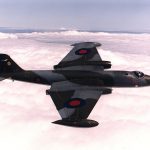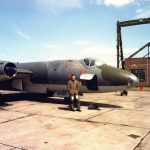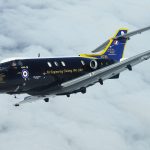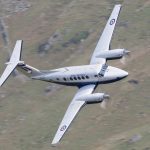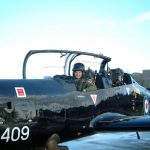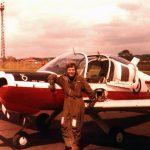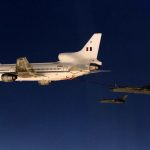System Description:
Each engine on the Seneca V is fitted with a Cowl Flap that can be used to regulate engine temperatures. If opened, the cowl flaps will increase airflow through the engine compartment and thus reduce the engine Cylinder Head Temperature (CHT), and to a lesser extent, the engine oil temperature and Turbine Inlet Temperature will also be slightly reduced.
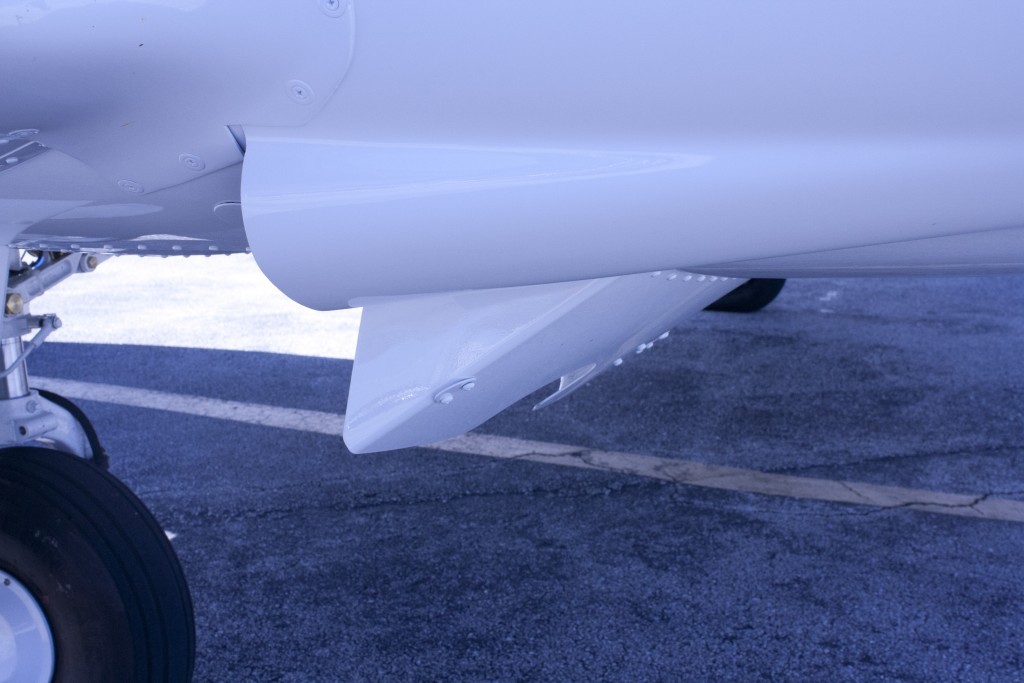
The cowl flaps may be half or fully opened, but doing so will have a negative impact on aircraft performance. When fully opened, the cruising speed will be reduced by approximately 10 kts.
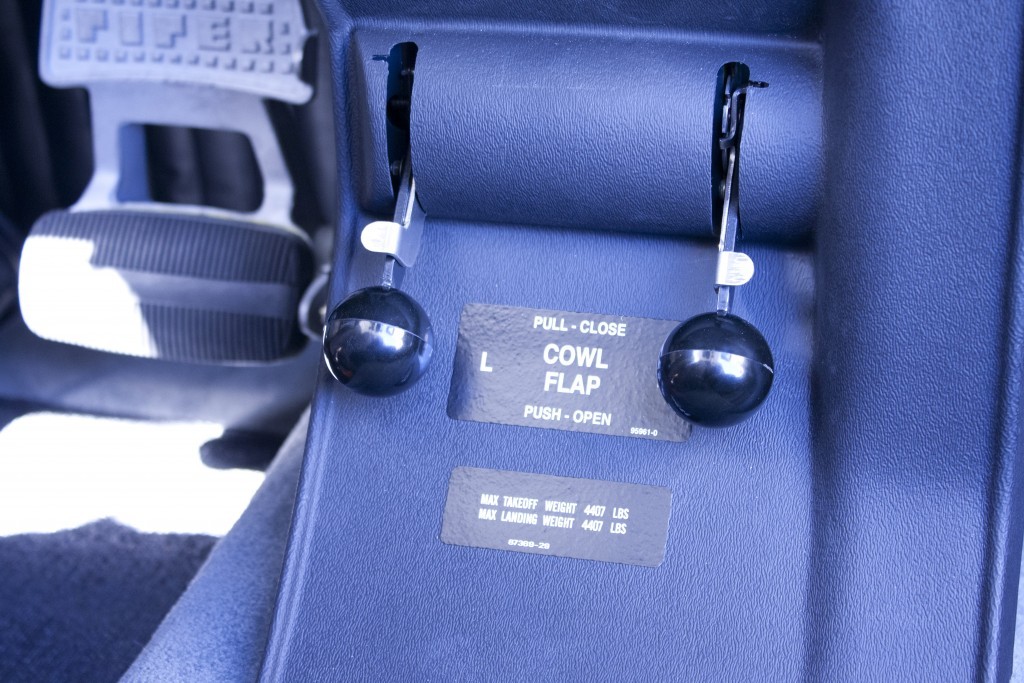
Operation:
The Seneca V QRH gives little guidance on efficient use of the cowl flaps other than to mandate that they are opened for the start-up, set as required after take-off, closed at the top of climb and opened after the final landing. During an emergency, the effected engine’s cowl flap must be opened after an engine fire in-flight, or closed after an engine failure or in-flight shutdown. They must also be opened after CHT or Oil temperature warnings.
The Seneca V SOPs add a little more detail; they suggest that the cowl flaps should be closed after take-off unless a performance climb is carried out at Vy or Vx. However, they go on to state that “cowl flaps should be selected as necessary to maintain the cylinder heat temperatures within the normal limits” [para 5.3.3], but do not elaborate on what that actually means.
The Piper Seneca V POH provides us with still more detail. In the Powerplant Limitations section [2.7], the maximum CHT is given as 460°C and the maximum Oil Temperature as 240°C. It also defines in section [2.9] that the normal operating range of CHT is 240°C – 460°C and of oil temperature is 100°C – 240°C. These are the ‘green’ range figures displayed on the PFD/MFD screens.
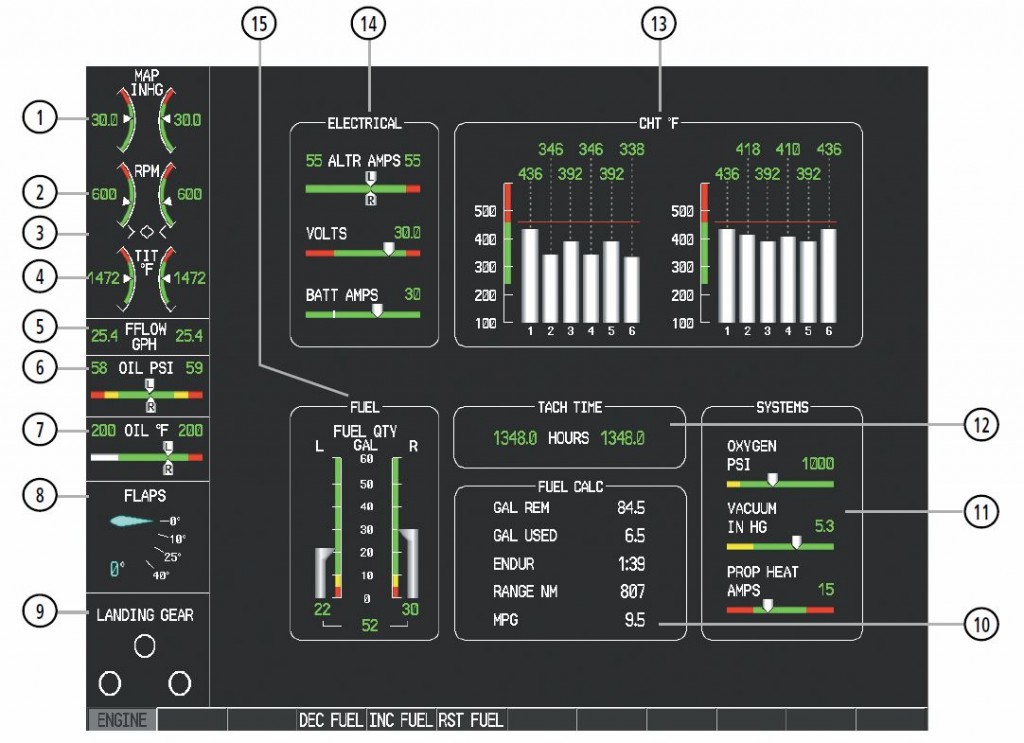
However, the POH goes on to state that, for maximum engine service life, CHTs should be maintained below 420°C and oil temperatures kept below 200°C during the cruise – each being 40°C below the top of their respective ‘green’ range.
Unless a performance climb is planned, the POH states that the cowl flaps should be set as required to maintain the CHTs and Oil temperatures within their normal ranges.
It is usually the case in the UK climate that, during a cruise climb, the CHTs and Oil temperatures will stay well within the ‘green’ range even with cowl flaps closed; however, this should periodically be confirmed by checking the values on the MFD engine page.
The POH also states that the cowl flaps should normally be closed for the cruise and the descent. This helps to maintain the TIT at approximately 1300°C or higher to keep the engines at the proper operating temperatures.
Normal Operations – Cruise Climb @ 110kts, 32″MAP, 2500RPM
As we normally establish a cruise climb immediately after take-off, during routine operations the cowl flaps should be closed during the after take-off checks to reduce unnecessary drag and increase the climb performance. However, the engine temperatures must be checked prior to doing so and routinely monitored thereafter to ensure that the CHTs and oil temperatures remain more than 40°C below the top of the ‘green’ band to ensure maximum engine life.
Single Engine Operations – Climb @ 88kts, 38″ MAP, 2600RPM
Unless it is on fire, after an engine has been shut down it’s cowl flap should be closed to reduce unnecessary drag. However, the POH dictates that the cowl flap on the live engine should be half opened and remain in that position until after landing.

